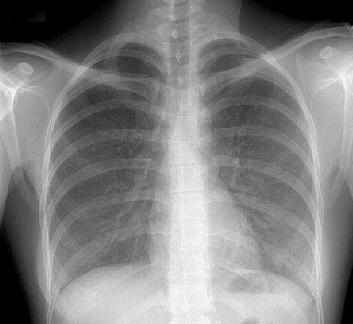- What is Hypersensitivity reaction – Type II
- Statistics on Hypersensitivity reaction – Type II
- Risk Factors for Hypersensitivity reaction – Type II
- Progression of Hypersensitivity reaction – Type II
- Symptoms of Hypersensitivity reaction – Type II
- Clinical Examination of Hypersensitivity reaction – Type II
- How is Hypersensitivity reaction – Type II Diagnosed?
- Prognosis of Hypersensitivity reaction – Type II
- How is Hypersensitivity reaction – Type II Treated?
- Hypersensitivity reaction – Type II References
What is Hypersensitivity reaction – Type II
Hypersensitivity means that the body responds to a particular substance (called allergens) in an exaggerated fashion, where it does not happen in normal circumstances. There are 4 types of hypersensitivity reaction, type I, II, III and IV. They are different in terms of the disease manifestation and pathological processes. However, only type II hypersensitivity reaction will be discussed here.
Type II hypersensitivity reaction is also called antibody mediated hypersensitivity reaction because this is the differentiating feature from other types of hypersensitivity.
Type II hypersensitivity reaction can occur in many parts of the body. Generally, they include:
- lungs
- skin
- blood system
- nerve
- thyroid

Statistics on Hypersensitivity reaction – Type II
The cases of different diseases vary widely. However, certain diseases such as Grave’s disease can be common. Also, diseases such as systemic lupus erythematosus can have cases of 1.8-7.6 per 100,000.
Note that systemic lupus erythematosus is a disease of mixed hypersensitivity – type II and III hypersensitivity reaction occur in this disease.
Risk Factors for Hypersensitivity reaction – Type II
Depending on the manifestations of different type II hypersensitivity diseases, there are different risk factors as well.
There are some gender differences between diseases of type II hypersensitivity. Some diseases are more common in women such as systemic lupus erythromatosus (SLE) and Grave’s disease. However, diseases such as Goodpasture’s syndrome are more common in men.
Also, ethnic differences do occur in the diseases of type II hypersensitivity diseases.
Progression of Hypersensitivity reaction – Type II
Type II hypersensitivity reaction is characterised by antibodies directed toward antigens (substance that attracts the antibody to bind with) that are present on cell surfaces outside the cells.
The antigens can either be from the body itself or from outside the body (for example, bacteria or microorganisms that infect the body).
By the various biochemical mechanisms, the end result are tissue damage to the body.
How is Hypersensitivity reaction – Type II Diagnosed?
Depending on the different type of diseases, some general investigations may be necessary. Basic routine investigations may include looking at the blood function, liver function, thyroid function and kidney function.
Prognosis of Hypersensitivity reaction – Type II
Type II hypersensitivity diseases can be widely different from one to another. It can be life-threatening such as in blood transfusion reaction or severe immune thrombocytopaenic purpura (ITP) – they need medical attention immediately if the diseases are severe. Some conditions such as pernicious anaemia have good prognosis as treatment can usually be administered to control the disease.
How is Hypersensitivity reaction – Type II Treated?
There is no cure for these diseases, the treatment aims at symptom control only. Because of the pathogenesis of these diseases are antibody in origin, a lot of treatment options are aimed at that.
Depending on the severity of the hypersensitivity reaction, different treatment approaches are applied. Treatment options, either given alone or in combination, include the following:
- steroids: these drugs include prednisolone, dexamethasone, etc. In type II hypersensitivity diseases, sometimes high dose steroids are used. Depending on the diseases, steroid could become a long-term medication. In such cases, long term use will need medical supervision for monitoring of potential side effects.
There are other treatment methods all aiming at altering the body’s immuune response, this include:
- intragam infusion: this is infusing the body with antibodies. There are many potentially severe side effects due to this, hence it must be administered under specialist supervision.
- plasmaphoresis: this is removing the blood autoantibodies.
- other drugs: interferon, cyclophosphamide, cyclosporin.
Hypersensitivity reaction – Type II References
- Braunwald E et al. Harrison’s principles of internal medicine. 15th ed. New York; McGraw-Hill; 2001.
- Cotran, Kumar, Collins. Robbins Pathologic Basis of Disease. 6th ed. WB Saunders Company. New York. 1999.
- eMedicine: Graves Disease [online]. 2004. [Cited 2005 October 9th]. Available from: http://www.emedicine.com/ped/topic899.htm
- eMedicine: Systemic Lupus Erythromatosus [online]. 2005. [Cited 2005 October 9th]. Available from: http://www.emedicine.com/EMERG/topic564.htm
- Middleton E Jr, Reed CE, Ellis EF, et al, eds: Allergy: Principles and Practice. 5th ed. St. Louis, Mo: Mosby-Year Book; 1998.
- Roitt IM: Essential Immunology. 9th ed. Oxford, UK; Blackwell Scientific; 1998.
- The Merck Manual: Disorders with Type II Hypersensitivity Reactions [online]. 2005. [Cited 2005 October 9th]. Available from: http://www.merck.com/mrkshared/mmanual/section12/chapter148/148b.jsp
All content and media on the HealthEngine Blog is created and published online for informational purposes only. It is not intended to be a substitute for professional medical advice and should not be relied on as health or personal advice. Always seek the guidance of your doctor or other qualified health professional with any questions you may have regarding your health or a medical condition. Never disregard the advice of a medical professional, or delay in seeking it because of something you have read on this Website. If you think you may have a medical emergency, call your doctor, go to the nearest hospital emergency department, or call the emergency services immediately.







